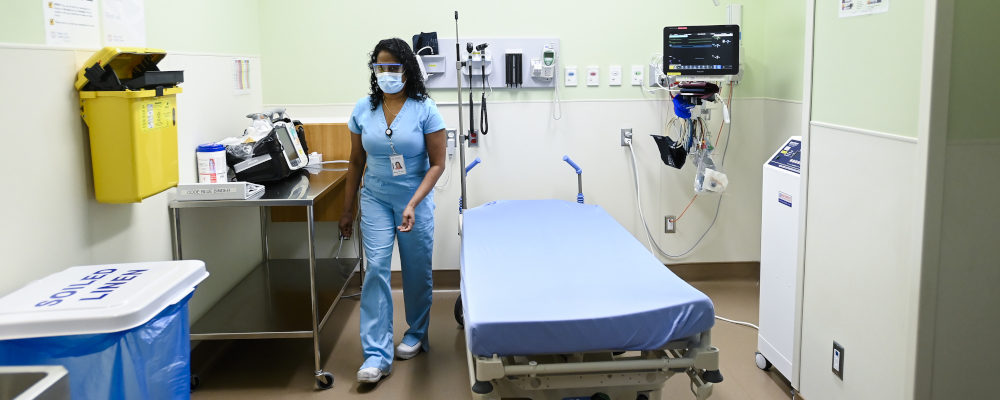It is well documented that women are not well-represented in health care research and that there are systemic biases that affect a woman’s access to both health care and health care-related information.
A perfect example is cardiac health.
Did you know that heart disease kills more women than men?
Heart disease is a leading cause of death for women in Ontario each year, yet a study by Women’s College Hospital reveals that only 35 percent of clinical trial subjects in cardiovascular research are women. What’s more, many cardiovascular drugs have been on the market for years but have only been tested on men.
It’s not a quantifiable bias to point to but anecdotally I cannot think of a scene in a movie or television show where the powerful female CEO crumbles to the floor, suffering from a heart attack, induced by a heated argument.
It will therefore likely come as a surprise that women are more likely than men to suffer a heart attack and not know it.
To oversimplify, women are dying because they have been excluded from the research to create a treatment for a known disease. This is all because women do not make good “test subjects”—their hormones fluctuate too much. Heart disease goes under-detected in women because doctors do not recognize the risk factors and symptoms unique to this sex
These inequities are not new. In fact, medicine has a long and shocking history of absorbing socially constructed gender divisions. Elinor Celeghorn’s recent best-selling book, Unwell Women, Misdiagnosis and Myth in a Man-made World documents this trajectory. She begins in the third century BCE when Aristotle described the female body as the inverse of the male body, with genitalia “turn’d outside in”. Since then, the male body has been seen as superior and women defined by their uterus—an anatomical deficiency that defines the purpose of their existence. She chronicles that by the 16th century, women progressed from defective to demonic as King Henry VIII passed the Witchcraft Act. In the 18th century, medicine had been professionalized and defined by the works of educated men and the societal confines in which they write. She marks the 19th century as a time that popularized hysteria; made famous were the delusions and diseases provoked by the uterus.
The word uterus, by no coincidence, in Greek is hystera.
In the last 200 years, campaigners and politicians have rightly advocated for women’s representation and access to health care. It cannot be disputed that vast inroads have been made. But it is difficult to claim triumph knowing that, until the 1990s, women were not included in most health care studies. This means that the majority of prescription drugs and treatment protocols have been disproportionately studied on men and not designed to help women.
The icing on this uneven cake is a lack of public education.
In Ontario, health care education for young women effectively stops in Grade 12. Most often, women are confronted with harsh medical realities by happenstance.
I have a friend who only learned of the presence of her hereditary cancer because she was pregnant and having tests done. Another found out they had perimenopause after a trip to the dermatologist to treat new acne. A third was diagnosed with endometriosis, a chronic and painful disorder, because the cramps she thought were IBS sent her to the emergency room.
Did you know that once you turn 50 you’re supposed to get a mammogram every two years? That you can experience perimenopause at 30? That you can check your ovarian reserve?
If my tone comes off as alarmist or harsh, I am glad. As I get older, I have spent a disproportionate amount of time researching and engaging with health care resources trying to find the appropriate responses to my body’s changes.
While I am struck by how much time and money one can spend just to learn the most simple facts about their health, it is how I arrive at the conclusion that women’s health is intimately connected to our economy. And more specifically, our province’s post-COVID-19 economic recovery.
It is a fact that the COVID-19 pandemic has disproportionately affected women’s employment around the world.
While women make up 39 percent of global employment, they account for more than half of all pandemic-related job losses.
There is an opportunity for Ontario to lead a cross-ministry initiative to educate women to take control of their health and in turn empower their role in the workforce. The Ontario government’s interventions to address economic participation can also address these societal aspects of gender equality.
First, the government can invest in maternal health, mental health, and access to care. Ontario currently spends more subsidizing electricity rates than it does on cancer screening, cancer treatment, mental health services—including for children and youth—and midwifery services combined.
Second, there can be long-term education campaigns to encourage preventative services in shots and screening services. A public target for increased preventative screenings communicated to Ontario’s women via a public advertisement campaign or a mailed info package to every household is both good politics and good policy.
Third, there might even be the opportunity to nudge the private sector to adopt family-friendly policies and fertility planning services. After all, these types of investments in the female workforce are cheaper than retraining and replacing over and over.
After a trying history, it is time for medicine, our health system, and the government to put women’s health and their role in our economy first.
With provincial elections just around the corner, these are platform planks that can be easily communicated by candidates, handy to have when knocking on doors. A premier that stands behind a women’s access to information to empower her healthcare and in turn support our economy? That’s a campaign everyone can get behind.




